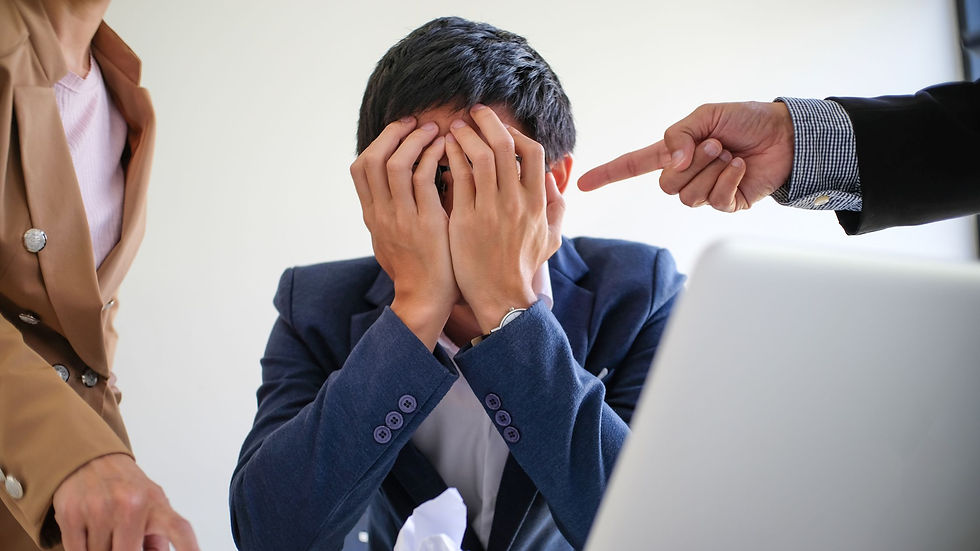Always On, Always Anxious The Mental Health Cost of Digital Life
- tanyakabote
- Jul 6
- 3 min read

There is a quiet fatigue many of us carry now. It creeps in after back-to-back video calls, when work bleeds into evenings, or when you scroll late into the night even though your body is begging for sleep. In a world that’s always on, it is harder than ever to switch off, and our mental health is feeling the pressure.
While conversations about digital burnout often focus on young people, this isn’t just about teenagers and screen time. The emotional weight of being constantly connected is now something working adults, parents, freelancers and business owners are grappling with every day.
Smartphones, AI and social media are no longer novelties, they are stitched into daily life. But what’s changed is the intensity. More platforms, more pings, more expectations to be reachable at all hours.
A 2024 report from the Mental Health Foundation found that 43% of UK adults feel anxious due to the pressure to stay digitally connected. Among remote and hybrid workers, the figure is even higher. What once felt like freedom now often feels like digital surveillance. The laptop might close, but the messages, pings and notifications continue.
AI is being added into everything from wellbeing apps to therapy platforms. It can be helpful, giving people quicker access to support, mood trackers and coping tools. But AI isn’t your friend. It cannot notice the sigh in your voice or the hesitation in your pause. It cannot offer the human warmth that comes from real understanding.
The danger isn’t AI itself; it is how it quietly replaces meaningful connection with convenience. And when people start turning to AI for emotional reassurance rather than people, it can deepen the very loneliness they were trying to ease.
These issues aren’t theoretical, they are playing out in homes and offices across the UK.
In a revealing but under-reported case, employees at luxury fashion brand LVMH were found to be under pressure to respond on WhatsApp within minutes, even out of hours.
Internal communications leaked in 2023 exposed that some staff were expected to be digitally available 24/7, with slow replies drawing criticism. One employee described it as “a culture of quiet panic.” The expectation to always be on wasn’t written into politics, but it was felt deeply.
Stories like that aren’t limited to fashion or high-pressure industries.
Take Hannah, a remote project manager who checks Slack at 11 p.m. just to “clear a few things before bed.” She hasn’t felt properly rested in months. “If I don’t respond quickly, I feel like I’m letting the team down.”
Or Darren, a small business owner juggling emails, WhatsApp, LinkedIn and Teams. “It never stops. I used to love what I do, but lately, it feels like I’m always chasing something I can’t quite catch.”
These aren’t extreme cases, they are everyday realities in a digital-first culture.
We’re not going back to a world without tech. Nor do we need to. But we do need to renegotiate the terms of our connection, on our own terms.
Some people are setting their own boundaries:
Switching off notifications outside working hours
Creating a phone curfew at night
Taking lunch away from screens
It’s not about quitting digital life, it is about creating breathing space within it.
Others are being more intentional about what they let in. Following accounts that inform instead of overwhelm. Muting noise. Choosing content that feels human, not hollow.
Offline connection still matters. Eye contact, shared laughter, short catch-ups with people who really see you, these things can restore what digital life slowly drains. In the workplace, culture needs to catch up. Productivity doesn’t require 24/7 presence. Leaders who model boundaries show that being reachable should not come at the cost of being well.
Technology isn’t the villain, but if we care about mental wellbeing, we need more than digital perks. We need permission to rest. Space to say “not right now.” And the confidence to know that switching off isn’t weakness, it’s self-respect.
It’s not indulgent to unplug. It’s not lazy to take a break. It’s necessary. And it is how we stay well in a world that never seems to pause.
Further Reading & Sources
Mental Health Foundation (2024). Mental Health and Digital Connectivity in the UK
Financial Times (2023). “LVMH staff reveal pressure to respond instantly to WhatsApp messages, even outside work hours.”
Royal Society for Public Health (2022). Scroll Free September Report: The Impact of Social Media on Mental Health
BCS, The Chartered Institute for IT (2023). AI and Mental Health: The Double-Edged Sword of Digital Support


